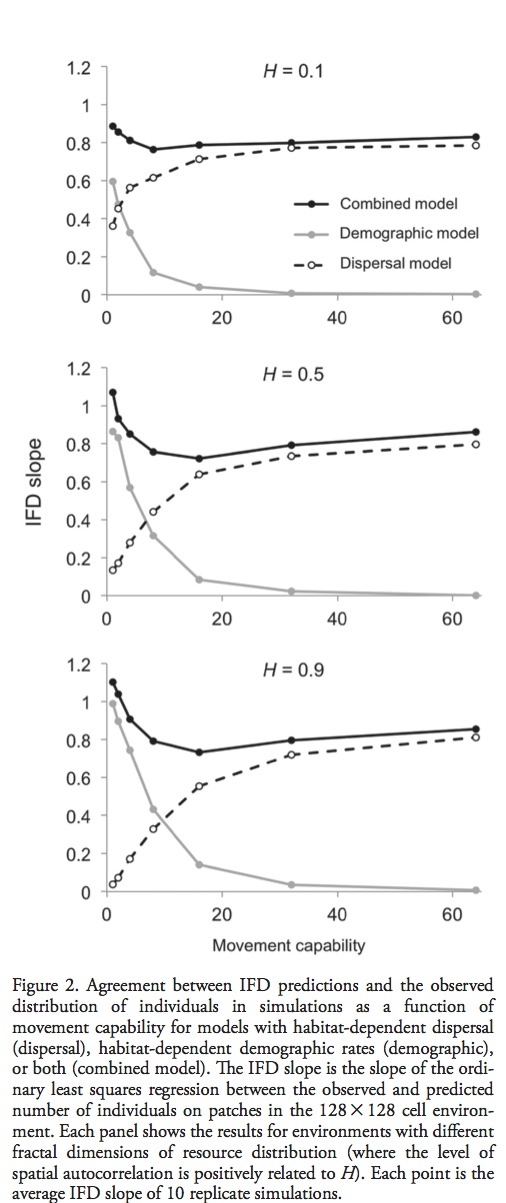Motivation: Both dispersal and local demographic processes shape the distribution of the population among varying habitat qualities. However most theories, experiments, and field studies have focused on dispersal. The authors attempt to show how both dispersal and demographic processes shape a population’s distribution, and when either mechanism is more important.
Population dynamics were primarily explained via demographic processes, while distribution was a function of dispersal process. These authors would also like to bring in the ideal free distribution (IDF) theory to explain population distributions. IDF predicts that individuals will be distributed among patches of different quality so that the fitness of individuals in different patches is equalized – individuals can’t improve fitness by moving to another patch. As an aside, given that the underlying theory requires individual choice of patch occupancy this work is only appropriate for populations that can actively choose how they are dispersed or move. The IDF can arise from 2 possible mechanisms: 1) dispersal, where individuals use information about habitat quality to make movement decisions, or 2) demographic processes where the habitat quality experienced by individuals affects demographic rates.
Methods: The authors explore the 2 mechanisms that lead to IDF by extending a individual-based model of habitat dependent dispersal, growth, reproduction, and survival of individuals. All simulations wer done on a 128 x 128 cell grid. Each grid/habitat patch had its own logistically growing resource, and patch quality differed by the carrying capacity of this resource. To examine the relative effects of dispersal and demography, the model simulations were run with only habitat dependent dispersal, habitat dependent demography, or both. This was done by varying 2 traits: the maximum dispersal distance (M) and the spatial scale of resource heterogeneity (H).

Results: When both habitat dependent dispersal and demography were included in the simulation population distributions closely matched IFD predictions. Simulations of populations with only demographic processes (i.e. Dispersal only) were overabundant in low-quality patches and under abundant in high-quality patches resulting in low correlation with IFD predictions. This effect was exacerbated in environments where the spatial scale of resource heterogeneity was large. When habitat quality influenced demographic rates (but dispersal was random), the effect of scale on IFD was reversed – highly mobile populations were sub optimally distributed with respect to habitat quality, reducing the scale of resource heterogeneity only exacerbated the trend.
Take-home: Pulliam demonstrated the need to include passive dispersal processes when describing population distributions, Martin et al. has demonstrated the need to include dispersal and demographic processes of populations with active dispersal. Spatial scales that limited the resource matching capacity of one process coincide with those that promoted the resource matching capacity of the other process.
Martin, Benjamin T., et al. “Scale‐dependent role of demography and dispersal on the distribution of populations in heterogeneous landscapes.”Oikos (2015). doi: 10.1111/oik.02345
